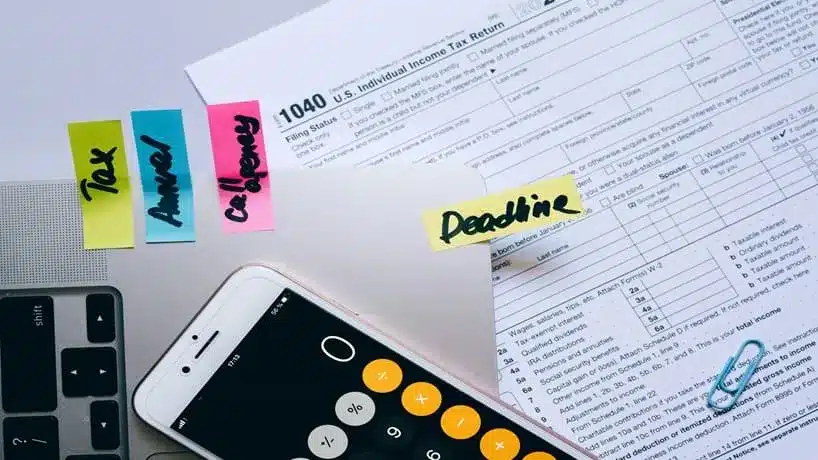With the dynamic financial environment of the present day era, there is one thing that has stayed constant and that is the significance of tax management in an efficient manner Whether you are a salaried person, an entrepreneur or a business person who has invested his/her money, you need to know about tax laws and make the right financial choices to save money and retain your wealth.
However, it is not so simple to find your way in confusing taxation rules and regulations. This is the place where the services of a tax consultant professional will help.
Tax consultants are not only number crunchers; they are also the strategic partners who assist you to make sound financial decisions and reduce liabilities, and maximize the returns.
The Bureau of Labor Statistics (BLS) projects tax accountant employment to grow by a promising 6% from 2021-2031, as fast as the average for all occupations. The position of tax consultants has been indispensable in 2025, with tax structures still shifting and government compliance changing, making government compliance crucial.
What is the work of a tax consultant?
A tax consultant is a competent expert who practices tax law as well as financial planning and compliance management. Their work is much more than submitting returns, they study the sources of your income, determine deductible expenses and help you organize financial plans with legal provisions.
These professionals make sense of complicated rules, assist customers in remaining in the regulations of the government and develop financial maps that enhance stability over time. Although the business audits and other personal investments planning are the most common examples, tax consultants can provide valuable information to help people and organizations establish a firmer financial base.
Many professionals pursue advanced programs such as a tax practitioner course to gain the expertise required to assist clients efficiently and remain updated with the latest tax reforms. The certification not only increases credibility but also allows opportunities to work in accounting firms, corporate finance teams, or as independent consultants.
Why are tax consultant services so important in 2025?
Under the control of the digital taxation system, heavy audits, and constant changes in the regulations, citizens and organizations can no longer afford to mismanage their finances. Tax consultant services are important in enhancing accuracy and transparency of each financial transaction.
Here’s why they matter more than ever:
- Changing tax laws: Tax regulations change regularly. The updates are tracked by the professionals so that you remain compliant and avoid penalties.
- Digital economy challenges: E-commerce, cryptocurrency, and other digital assets have placed a strain on tax systems. These new financial instruments are managed by the help of consultants.
- Financial optimization: They look at your incomes, costs and investments to reduce the liabilities without legal limits.
- Audit support: In case of scrutiny or audits, a tax consultant can present your case and see the smooth running of the process of audit with the tax authorities.
How do tax consultants help individuals manage finances better?
The majority of people only consider taxes when they are in filing season. But an affordable tax consultant will make sure that you are ready throughout the year. They assist with:
- Tax planning: Planning your income, deductions and investments to minimize your taxable income.
- Retirement and savings planning: The long term financial planning like the provident funds, pension schemes and insurance.
- Investment decisions: Suggesting investment valuables including mutual funds, bonds or equity-linked savings.
Why should businesses hire tax consultants?
For businesses, compliance with tax may be overwhelming, particularly where the business has several revenue sources, employee welfare, and operational costs. A tax consultant performs the functions of a financial guide, putting the financial structure of the company into accordance with legal standards.
They help:
- File GST, corporate, and payroll taxes accurately.
- Recognize tax-saving deductions and credits.
- Keep proper records on audits and evaluations.
- The future investment should be planned in such a manner to reduce the burden and maximize profitability.
What are the common mistakes people make without a tax consultant?
It seems that a lot of people think that it is sufficient to use online tools or simple tax filing software. Nevertheless, in the absence of professional knowledge, expensive mistakes can be made:
- Missing out on deductions or rebates.
- Reporting a misleading income, which is punishable by law.
- Ignoring long term tax planning, which influences the financial health.
- Overpaying taxes due to lack of awareness of exemptions.
A tax consultant prevents these pitfalls and helps you approach taxation with clarity and confidence.
How to choose the right tax consultant?
To select a professional, one should not just look at the qualifications. You ought to find one who:
- Relevant certification and experience.
- Know what you need in terms of finances or business.
- Communicates clearly and provides transparent advice.
- Stays abreast with the new taxation laws and online applications.
How tax consultants add long-term value
Tax consultants do more than bring about temporary savings. They teach you to develop a financial discipline and planning habits. Over time, this leads to:
Better wealth management: Informed investment and tax strategies.
- Improved compliance: Fewer risk of fines or legal hassles.
- Enhanced profitability: By determining regular opportunities to save tax.
- Future-readiness: As taxation becomes more digital, consultants guide you through new systems with ease.
Finally, through tax consultant services, one can have peace of mind- this is because your money is working towards you rather than against you.
Conclusion
A tax consultant is no longer an option in the modern world where financial regulations change at a high rate. These professionals serve as your financial custodians and take care of the fact that your hard-earned money is safeguarded, optimized, and legal. No matter whether it is a personal tax client or a business entity striving to enjoy long-term growth, a suitable tax consultant can do you a favor.
Professional training can result in many opportunities to those who want to pursue a career in taxation. S20 Training Institute provides a set of professional training programs aimed at providing the learner with tax and finance skills of the highest level.
Their practical approach, real-world case studies, and industry-relevant curriculum make them an excellent choice for aspiring professionals who want to thrive in this field. Enroll today to step confidently into a rewarding financial career.
FAQs
1. What does a tax consultant do?
A tax consultant assists a person and business to plan, administer and submit tax returns in an effective manner without legal violations.
2. How can hiring a tax consultant save money?
They seek deductions, credits, and strategies that lessen your taxable income in accordance with the laws, which will save you on valuable sums of money every year.
3. Are tax consultant services useful for freelancers and small businesses?
Absolutely. The income streams, expenses and compliance are managed by consultants and this is crucial in case of freelancers and SMEs.
4. How often should I consult my tax advisor?
Preferably, once in six or twelve months, on planning and once during the filing season. Regular consultations are even better for businesses.
5. What qualifications should I look for in a tax consultant?
Select certified professionals who have working experience and demonstrated the expertise in tax law and financial planning.











